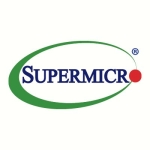
Cisco UCS B-Series Valuable Features
MB
Muhammad AlihyderBhuiyan
Head of IT Operations at NCC BANK LIMITED
Cisco UCS B-Series has reliably sustained smooth operations without the need for significant maintenance. Its administration capabilities provide easy access to performance reports, logs, and utilization data, which are essential for effective server management. Additionally, the integration capabilities are seamless, and the power consumption and heat generation are low, resulting in reduced cooling costs and increased financial benefits.
View full review »PK
PankajKumar19
Data Center SME at Orange España
The most beneficial feature is UCS Manager. It's the best way to manage hardware, creating group policies, like scrub policies and maintenance policies. It is managed through UCS Manager, creating WLAN numbers and MAC address policies. Making a profile and assigning it through Cisco UCS Manager for each blade is an easy task.
In case of any outage, just replace the physical host, attach the profile from Cisco UCS Manager, and it will test the original one. So, UCS Manager is the best thing I'm using in Cisco UCS.
FA
Fred Armantrout
Senior System Specialist at Burns & McDonnell
We are using it in the converged infrastructure with the common UCS Manager to push out:
- Profiles
- Firmware
- Console access
- VLAN configurations
- Troubleshooting
Buyer's Guide
Cisco UCS B-Series
March 2025
Learn what your peers think about Cisco UCS B-Series. Get advice and tips from experienced pros sharing their opinions. Updated: March 2025.
844,944 professionals have used our research since 2012.
The most valuable feature of the solution stems from the fact that it is easily scalable. If you have a Cisco environment in your organization's setup, it becomes easier to position Cisco's products in an infrastructure that is as good as our company's clients. Cisco's brand name and the reliability aspect attached to it give a lot of positive vibes about the tool to the clients.
Why pick a UCS blade over a Dell, HPE or Lenovo system? The answer depends on what application I need to run. If I want a small-scale, 3-4 server application space in a localized area, I want a rack mount, for a price advantage. If I need a larger-scale virtualized environment, I prefer blades, and for the lowest OpEx as I scale out, I find Cisco's UCS lets me manage a larger footprint with fewer people.
View full review »KE
KareemEzzat
Cyber Security Analyst at Petrotrade
The most valuable feature of the solution stems from the fact that it offers reliable and easy functionalities. It can be used in a very easy manner, making it not a complicated tool.
The most valuable features of the solution are stability and security.
View full review »SA
Sidi Abdul
CTO at Next Technologies Ltd
The most valuable feature is the service profiles. When you get a faulty blade, all you need to do is just decommission that blade and plug in a new one. The decommissioned blade is associated with the service profile, and you connect a new blade, associating it with the same profile the older blade had. This allows for the same settings, like the MAC addresses, management IPs, and worldwide port names for the storage to be retained, making maintenance quite easy.
View full review »It's modular. You can get higher-density blades within the 5108 chassis and the 9508 chassis. With the X series, it's even better, as you can add bigger blades and more processing and memory. It is a lot more resource-intensive and scalable.
The solution is stable.
The setup is straightforward.
View full review »It has reliability, high availability, and a low total cost of ownership. Your servers stand a better chance of having data available because the total cost of ownership is very low. Once you buy it, you can almost afford to go to the last, because you don't need to buy another one.
They have management on the enterprise side. So, we manage directly through Fabric internet or the rack-mounted directly, whether on-premise, on the cloud, or private.
The most significant benefit of the blade itself is its stethoscope-like functionality. You can remove and reinsert the blade and attach the service profile if any hardware is damaged. This is the main objective of the solution. Additionally, we can leverage it in a hybrid infrastructure. We are also authorized to integrate the solution with other vendors. They have a wide range of offerings, and we integrate HyperFlex, which is merged with fabric and implemented with the ACI or Application Centric Infrastructure, to advance software defense solutions.
The most valuable feature that the B-Series has is related to the structure and architecture of the solution because in these solutions, you are using fabric interconnect as an interconnect device. The beauty of fabric interconnect is that it can work as in-house mode.
Fabric interconnect is the main component in the UCS solution. Fabric interconnect can act as two modes. One is in-house mode, and the other one is switching mode. The recommended one is in-house mode. When it works in in-house mode, it means that it won't process any storage, like flagging things, zoning, etc. It won't process Spanning Tree Protocol either. It will just proxy everything to the higher switch.
For example, if you have storage network traffic, the fabric interconnect won't process your flagging. It will make a proxy, and send it to your NPIV storage switch. It acts literally as in-house, and that makes the solution and architecture very easy, convenient, and scalable.
The other important feature is the switch technology that Cisco uses on their chassis. It's not like those of other brands. The beauty of Cisco is that with traffic interconnect, your network and storage won't come down to the chassis level.
It will stop at the fabric interconnect, and the traffic between the fabric interconnect and the chassis acts very similar to the fixed technology that Cisco uses between 2K and 5K. This means that the same architecture and the same technology that we use between 2K and 5K is used between the fabric interconnect and the IO module that's used at the back of the chassis.
This means that when you are using the IOM input/output module, the IOM module on the back of the chassis will not be like a regular switchboard. It will be just IO. So, this means that it is scalable. You can add as many chassis as you want to this whole solution, and you can remove them. You can move one chassis to another chassis. You can move one server from chassis one to chassis eight or chassis seven. You can have a lot of clusters. You can have a lot of failovers over the whole package.
Recently, with the new chassis, UCS X-Series, that Cisco recently introduced to the market, it is much more scalable.
View full review »The most valuable aspect of Cisco UCS B-Series is its network interface, HBA settings, and less connectivity as compared to rack servers. The scalability and easy management of the lifecycle, upgrades, and hardware failures are also valuable.
View full review »We jumped from old HP servers to this UCS and, of course, we very much like it in terms of its security, its interface, its functionality, the CPU, the memory and its central management interface. The computing power that it's given us has greatly improved the processing of our system. Overall, it's good.
HN
Hoang Quan Nguyen
Infrastructure Integration Analyst at a government with 10,001+ employees
Overall, all functionalities are excellent.
The feature that I found the most value is the abstract and stateless capacities.
MB
Muhammad AlihyderBhuiyan
Head of IT Operations at NCC BANK LIMITED
The platform has valuable features for management and good monitoring tools. It provides efficient insights.
View full review »The product is easy to use. It's user-friendly.
View full review »Stateless Blade is the best feature. If we have a blade go down we find that the server continues to work well.
View full review »The complexity is reduced by having one blade with four servers and half-blade servers. The server profile makes it easier to deploy and to manage with Cisco UCS Manager.
Cisco provides good flexibility to choose different products or different equipment within the blade servers, like CPU memory, logic board, etc., to make your own server. Other vendors don't have this option.
BW
Bob Whitcombe
Technical Sales Architect at a tech services company with 501-1,000 employees
Previously, the physical trappings of Cisco UCS, Intel chip-sets and UCS Manager were the most useful part of this server system. As we embrace new Intel CPU's, Chip-sets and memory, we are gaining added value from the original UCS design - which was a software construct based on XML API's and a suite of code that is really starting to blossom as a central automation vehicle, that scales to deliver new features and extended integration with a suite of security, management and performance offerings Cisco has added to its portfolio.
While UCS hardware leveraged standard x86 designs, the use of a single pane of glass to monitor, deploy and provision servers was a huge timesaver. Since its UCS release in 2009, Cisco has extended the core functionality with Central, a tool for managing multiple domains, Director - an automation tool and Performance Manager. In the past few years CIsco has been on a buying binge for the Data Center, snapping up Cliqr, Lancope, AppDynamics, ContainrX, and several others that are being integrated with in-house analytics tools like Tetration and external tools like Turbonomic to provide an incredibly powerful, secure automation platform that will be the foundation of a future autonomic server environment with adaptive security and dynamic self diagnosis.
Cisco UCS Manager is embedded in the cost of the fabric controllers and is used to manage the servers, chassis and fabric. It also serves as a link point for integrating tools like Director, Performance Manager and Central. Future additions to the UCS tool set are extensions that Cisco is feeling out how best to offer to customers - for straight purchase - or via subscription.
I encourage UCS users and those considering UCS adoption to dig into the subscription offerings and get some clarity on how they grow over time. For example, as powerful security tools like Stealthwatch (Lancope) are added, what other systems are required and how are those subscriptions managed. When Analytics are required - do you need a Gigabuck Third Party offering or are you going to jump on Cisco's Tetration bandwagon and roll your own? I push for simplicity with Cisco. However, you need good data for that conversation. Talk to the apps, dev and ops teams as to what is needed today, where you are going and what future needs will become vs what might be nice to have. Once you understand where you are going, you are in a much better position to negotiate with a relative newbie like Cisco on how best to get there.
Things will only get better going forward. UCS Manager is an XML construct. Everything is in software and can scale and expand with increased hardware capability, while other architectures require extensive effort on each end to develop hardware, then update and test a new rev of software for reliability and consistency.
The big challenge for Cisco today is they built UCS manager for Cisco CCIE's anxious and able to have every knob and dial available to tweak. As a result, UCS manager is overly complex relative to functions and features and a lot of effort can go into streamlining and simplifying the User Experience. However, after 8 years in the market and huge acceptance of its increased ROI over competitive offerings and an appreciation for what UCS provides in OPex reduction, you can buy experienced UCS engineers vs having to develop and train them, only to see them purchased by a competitor.
HK
Himanshu-Kumar
Associate Engineer at Quess GTS
The template feature is very good, and it works well.
The Boot from SAN function is good because using OTV, we can boot the device from any remote location.
I like the level of complexity that this product offers because I have a lot of relevant knowledge, which makes troubleshooting and performance tuning easier.
View full review »I think UCS is pretty typical of all blade servers in what is most valuable. We use it to try and save rack space. I think the ratio in terms of the number of units and the number of servers that we can get each chassis is quite good. We have a significant rack space saving in that regard. These B-series can hold up to eight servers.
View full review »The dashboard of Cisco UCS B-Series allows users to have multiple options displayed on a single interface and facilitates configuration from that dashboard. This ease of manageability is also appreciated.
View full review »The most valuable feature is definitely the service profile. I feel it provides a more stable environment, with very few issues with the hardware or fabric. These issues are rare and usually minor.
The solution has the ability to reuse or divide the networking, making it a flexible networking environment. We have a virtual network interface, which means that we can easily reconfigure the machines according to our needs.
View full review »The solution is very reliable in comparison to the other brands. Additionally, the uptime is very good, and they ensure 99.9% of uptime.
The platform provides robust compute power for hosting our servers.
View full review »AK
Antony K
Solution Architect at a manufacturing company with 201-500 employees
Going inside with the management and monitoring is valuable. The aggregation in the data center is beneficial. It also makes management easier as we can manage everything from one place.
View full review »The telepresence devices are improved. You can call by phone handset only, video call, and integrate with Teams and other third-party tools.
View full review »MM
Mohamed Mourshedy
IT infrastructure at Halcon
The solution's most valuable feature stems from its massive computing power, so you can have big data or mission-critical applications running on SQL Server.
View full review »RS
Ricky Santos
System Administrator at ON Semiconductor Phils. Inc.
The most valuable features of this solution are profiling, ease of administration, and monitoring.
Profiling provides easier deployment and configuration, especially if the new systems are intended only to increase compute resources.
The Dashboard is quite impressive and is, so far, the best based on my experience. It provides a detailed view that is easy to follow. The cross-links on the information are great.
View full review »Cisco UCS utilizes Service Profiles for server provisioning. These are logical profiles that are comprised of many smaller parts, such as BIOS settings, NIC settings, HBA settings, Firmware packages, boot policies and more. Creating consistency within your compute environment has proven valuable. Having the capability to add chassis and/or blades to my environment with just a few cables, and bringing these servers online with the required settings based on my profile is most valuable. Apply a Service Profile to a new, replace or relocated blade, and Cisco UCS takes care of the rest, provisioning as you expect.
View full review »Dell has a huge portfolio of products. It's easy to find whatever you need, and you can combine many types of products into a solution.
View full review »ST
Sotiris Tomopoulos
Presales Solutions Architect at Intracom Telecom
The solution is very unified and the technical team is very supportive, no help is needed from outside vendors.
View full review »JD
Juan Dominguez
Senior Solutions Architect & Consultant at ZAG Technical Services
After having used, configured and deployed HP and Dell blade systems, I was rather impressed at the time the initial setup of the UCS blade system took to achieve operational status. I was also very impressed with the thorough thought that went into the UCS Manager console and its capabilities as a whole. The conceptual layout of the UCSM was a technical breakthrough and though I tried to not compare it to HP or Dell, it was impossible not to. As our implementations grew and our overall knowledge of the system also grew, there was no turning back. The Cisco UCS team made what used to take hours to configure, setup and deploy, literally take minutes using their Cisco PowerCLI toolkit.
Another aspect of the Cisco UCS system that overshadows that of other technologies is the networking backbone that supports the blades themselves. Cisco created a network switch (control plane) in essence that caries both server traffic and uplink traffic from a single pair of "Fabric Interconnects". These Fabric Interconnects are capable of FC, FCoE and traditional Ethernet, thus making all the ports unified. Acting as the "brains" of the UCS Blade Server system and depending on the version of the Cisco Fabric Interconnects, the pair of fabric interconnects are capable of managing several UCS Blade Chassis and therefore eliminating the need to purchase more switching unnecessarily. The UCS Fabric Interconnects are capable of managing up to 5-10 Blade Chassis with 8 blades per chassis on a single pair of Fabric Interconnects. This is quite a large number of blade servers running from a single pair of Fabric Interconnects.
As you can see, the system scales nicely and the price point drops as your infrastructure grows in size, thus making the initial ROI even more attractive and feasible to make a business case in its favor.
The product’s most valuable features are:
- FCoE (Fiber Channel over Ethernet)
- iSCSI services
- QoS policies
- Call-home
- Direct connectivity to SAN Storage
- Hardware abstraction via Service Profiles
- Virtual Network Adapters from the Cisco VIC 1240 & 1340 series interfaces
- Diskless servers (boot from SAN)
- Reduced server provisioning time
- RBAC security
- Manageability or ease of use (single point of management)
SM
Sreevatsa M
Systems Administrator at Diyar United Company
The solution's most valuable feature is KVM Launch Manager.
View full review »AR
ARAVIND RANGA
VMware Administrator at a consumer goods company with 1,001-5,000 employees
The most valuable feature is the service profile.
The amount of RAM that it supports for HANA is good.
The maintenance is very easy.
View full review »The architecture of this solution is very valuable; it has five traffic interconnects, and uses a network highway so bandwidth is never an issue.
View full review »The most valuable feature is the ability to replace a server with another one, simply by applying the profile. This is not possible with others, where the MAC address is not virtualized.
If there is an issue with a server then it's simple to replace. In 10 minutes, it can be done, even if there's a hardware issue. This is the most powerful and important aspect.
View full review »SM
SilaMAY
Head Of IT Infrastructure and Support at a financial services firm with 501-1,000 employees
Some of the features I like from this solution are it has a fast configuration, it is not complex, and has high availability.
View full review »The UCS environment as a whole. The hardware is easily swappable and, utilizing the boot from SAN option, you can always keep your server intact due to the service profiles. So if your blade has failures and you have a hot spare, you can transfer the service profile to a new blade and be operational in mere minutes. Huge for uptime and perfect for environments like VMware ESXi hosts, which is what I use them for primarily.
View full review »- Deployment of new blade/host is quick via using hardware profiles
- No ethernet or fiber cabling required for new blades/hosts
- No zoning required to SAN storage for new blades/hosts
- New chassis can be quickly attached to fabric interconnect for deployment
The stability is very, very good. I haven't had any issues with it whatsoever over the past few years.
The scalability is very good.
The initial setup is straightforward.
The solution basically offers us everything we need. It's very complete.
View full review »The way the hardware is separated from the software definition of the components.
View full review »The ability to scale to multiple blades and multiple blade chassis quickly and easily.
View full review »MJ
Mikael Jensen
Sr. Operations Engineer at a manufacturing company with 1,001-5,000 employees
The stability provided by the product is its most valuable feature for our organization.
View full review »- Manageability
- Performance
I can connect Cisco UCS B-Series to multiple chassis and rack servers using a unified platform, then manage them on a single console.
View full review »Centralized Management using UCS Manager, and State less Servers.
View full review »Cisco UCS B-Series's most beneficial feature is agent management for print. Its performance is rock solid, and its servers are excellent.
View full review »AH
ArashHaghighifard
Team leader at Dana energy
The most valuable features are monitoring and processing, which can handle a lot of throughput and are more powerful than the HPE series.
View full review »The solution is stable.
The scalability is good.
Everything is nice and I like that it is centrally managed.
It's very easy to manage once you have everything set up.
The performance is great.
Technical support is helpful.
View full review »BB
SrEngineer672
Consultant at a tech services company with 51-200 employees
Probably the Cisco Integrated Management Controller.
View full review »The Dual Fabric design allows for online/in-service upgrades during production with no impact. Also, single point of management for all server profile and firmware management allows for guaranteed uniformity in the datacenter.
View full review »AP
AMADO PLATA
IT Infrastructure Manager at a tech company with 11-50 employees
I like that it's very manageable very easy to use and configure. I am not an expert, but the graphic user interface is quite simple very easy to use. It's a complete solution.
View full review »- Virtual NICs/HBA
- Nexus FC/Ethernet convergence
The VM-FEX, hardware integration with VMware vSphere.
View full review »- Flexibility,
- Management
- VMware interoperability
The GUI makes is simple to use and deploy.
View full review »The features of Cisco UCS that are of the most value to me is the ability to build Service Profiles for servers based on your needs. You can add HBAs and NICs to servers as needed, and you can remove them just as easily.
Also, with UCS, updating firmware and drivers has been simplified and can be done throughout the system simply by associating new firmware policies to the hardware. You can also run different versions of firmware as needed to support legacy applications.
View full review »DA
Daniel Aramayo
Implementation and Support Engineer at PRACSO S.R.L.
The hardware available for the solution is very good. It's quite reliable and robust.
The visualization is excellent.
The initial setup is pretty simple and straightforward.
The scalability is excellent.
We found that the stability is extremely reliable.
Technical support is very good in general.
View full review »For UCS B series, its integration with devices like FI, N5K. I also like UCSM where we can configure Service Profile and the way it combines LAN, SAN, and the server on the blade. I love it.
View full review »
The Cisco UCS Blade Server system is our newest blade server system. We bought the server as the winning server system for our Oracle Peoplesoft Campus Solution system. It bested bids from Oracle, IBM, HP and Dell.What we really like about the product is the scalability of the entire server system. the platform's architecture ensures that we can easily grow our systems as the need arises.The server system also has the necessary features that we want like tight integration with virtualization technologies and storage systems. We have gone full virtualization with our Oracle system implementation and we are very satisfied with the implementation.Lastly, Cisco really did a good job in making sure that such a server system does not produce unnecessary cable clutter.
View full review »
- Easy to deploy, scale and expand based on a number of server range available.
- Centralization for different resources including network, compute and storage
The most valuable feature is the UCS Manager which integrates everything.
Java and HTML 5 base admin console is now available
View full review »- Management: The admin interface is very intuitive.
- Easy scalability: For example, when adding a new blade server to the chassis or when adding a new chassis, I can use the old management IP address to manage and create new profile.
- Remote Access to the device
- Ability to scale to different servers
- Centralized management
Great consolidation, high mem capacity, excellent reduction on ports.
View full review »
The most valuable features of the Cisco UCS B-Series are reports for virtualization and the large memory it has.
View full review »Buyer's Guide
Cisco UCS B-Series
March 2025
Learn what your peers think about Cisco UCS B-Series. Get advice and tips from experienced pros sharing their opinions. Updated: March 2025.
844,944 professionals have used our research since 2012.























